James Peale (1749-1831) stands as a significant figure in the nascent American art scene, a prolific painter whose contributions spanned portraiture, especially miniatures, and still life, a genre he helped establish in the United States. As a member of the illustrious Peale family of artists, his work not only reflected the aesthetic sensibilities of the colonial and early federal periods but also played a crucial role in shaping the trajectory of American art. His life and career offer a fascinating window into the artistic, social, and political currents of a nation in its formative years.
Early Life and Artistic Awakening
Born in Chestertown, Maryland, on May 20, 1749, James Peale was the younger brother of the renowned artist and polymath Charles Willson Peale. Their father, Charles Peale Sr., was an English immigrant who worked as a schoolmaster, and their mother, Margaret Triggs Peale, hailed from Ireland. The family environment, though not initially steeped in fine art, would eventually become a crucible for artistic talent.
James's early years were spent in Annapolis, where he initially apprenticed in practical trades. Under the guidance of his elder brother, Charles Willson Peale, he learned the crafts of saddlery and woodworking. However, the allure of the brush proved stronger than that of the awl or chisel. By 1767, James had begun to receive formal instruction in art from Charles, who had himself studied under prominent artists like John Hesselius in America and later, Benjamin West in London. James's artistic education encompassed both watercolor and oil painting techniques, laying a versatile foundation for his future career.
Around the mid-1770s, James Peale relocated to Philadelphia, which was rapidly becoming the cultural and political heart of the burgeoning nation. This move was pivotal, placing him at the center of artistic activity and patronage. Philadelphia would remain his primary base for the rest of his life, providing a supportive environment for his artistic development and professional practice.
Service in the Revolution and Return to Art
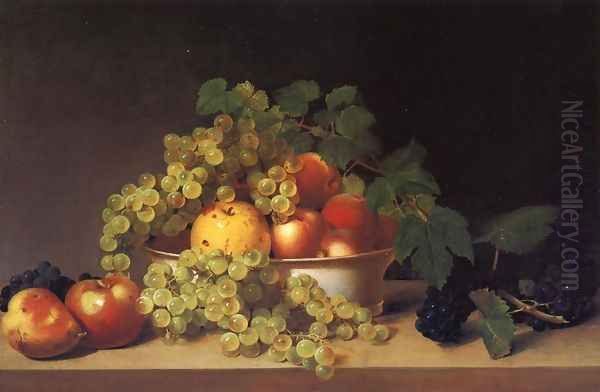
The American Revolutionary War (1775-1783) interrupted James Peale's burgeoning artistic career. Like his brother Charles Willson Peale, who was an ardent patriot and officer, James also served the cause of independence. He enlisted in the Continental Army and served with distinction for three years, rising to the rank of captain in the 1st Maryland Regiment. His military service underscored the Peale family's commitment to the new republic, a theme that would often subtly permeate their artistic endeavors.
Upon the conclusion of the war, James returned to Philadelphia and resumed his artistic pursuits with renewed vigor. The post-war period was a time of nation-building, and artists like Peale played a role in forging a national identity. Portraiture was in high demand, as prominent citizens and heroes of the revolution sought to have their likenesses preserved for posterity. James Peale, with his refined skills, was well-positioned to meet this demand.
A Master of the Miniature
While James Peale was proficient in various forms of painting, he gained particular renown for his exquisite miniature portraits. Miniatures were highly prized in the 18th and early 19th centuries, serving as intimate keepsakes and tokens of affection or remembrance. They required meticulous detail, a steady hand, and a keen eye for capturing a sitter's likeness and character on a small scale, often on delicate surfaces like ivory.
Peale excelled in this demanding art form. His miniatures are characterized by their delicate brushwork, subtle modeling, and sensitive portrayal of his subjects. He often painted on ivory, a material that lent a luminous quality to the finished work. His sitters included many prominent figures of the era, and his ability to capture a sense of personality within the constraints of the miniature format was widely admired.
Among his most notable miniatures are those of George Washington and Martha Washington. These works, now housed in collections such as the Independence National Historical Park in Philadelphia, are valuable historical documents as well as fine examples of early American portraiture. His miniature of Major John Clark (c. 1785) and Mrs. John Wilson (c. 1795) further showcase his skill in conveying both the status and the individuality of his subjects. The demand for his miniatures remained strong for many years, cementing his reputation as one of America's foremost miniaturists, alongside contemporaries like Edward Greene Malbone and Charles Fraser.
Pioneering American Still Life
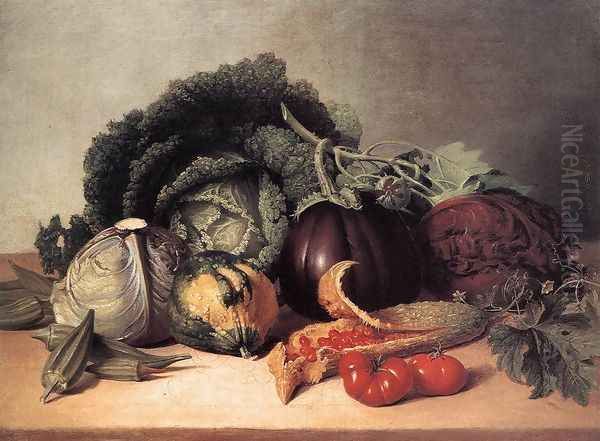
Beyond portraiture, James Peale made a seminal contribution to the development of still life painting in America. While his brother Charles Willson Peale and nephew Raphaelle Peale also explored this genre, James is widely considered one of the true founders of the American still life tradition. He began to focus more intently on still life later in his career, particularly after his eyesight began to decline, making the detailed work of miniatures more challenging.
His still lifes typically feature arrangements of fruits, vegetables, and sometimes flowers, often displayed in baskets or on tabletops. These compositions are celebrated for their rich colors, careful attention to texture, and the illusion of three-dimensionality. Works like Still Life with Fruit (c. 1821), Still Life: Balsam Apples and Vegetables (1820s), and Fruit Piece with Peaches Covered by a Handkerchief (c. 1820s) exemplify his mastery of the genre. He had a particular fondness for depicting the bounty of American produce, from luscious peaches and grapes to crisp apples and vibrant watermelons, as seen in his popular Still Life with Watermelon (c. 1825).
Peale's still lifes are more than mere depictions of objects; they often carry subtle connotations of abundance, domesticity, and the richness of the American land. His approach was less overtly symbolic than some European still life traditions, focusing instead on the direct, almost tactile, representation of natural forms. His work in this area influenced subsequent generations of American still life painters, including his own daughters and artists like John F. Francis.
Ventures into Landscape and Historical Painting
While miniatures and still lifes formed the core of James Peale's oeuvre, he also ventured into landscape and historical painting, though less frequently. His landscape paintings, often depicting scenes around Philadelphia such as View of the Wissahickon (c. 1830), reflect the growing interest in the American landscape that would later culminate in the Hudson River School, led by artists like Thomas Cole and Asher B. Durand. Peale's landscapes, though perhaps not as groundbreaking as his still lifes, demonstrate his versatility and his engagement with the evolving artistic tastes of the time.
He also produced a few historical paintings, a genre highly esteemed in academic circles. One notable example is The Ambush of Captain Allan McLane (1803), depicting a dramatic Revolutionary War incident. This work showcases his ability to handle complex compositions and narrative subjects, though his primary legacy would remain in the more intimate genres of portraiture and still life. Such historical works were also being produced by contemporaries like John Trumbull, who specialized in grand scenes of the Revolution.
The Peale Dynasty: A Family of Artists
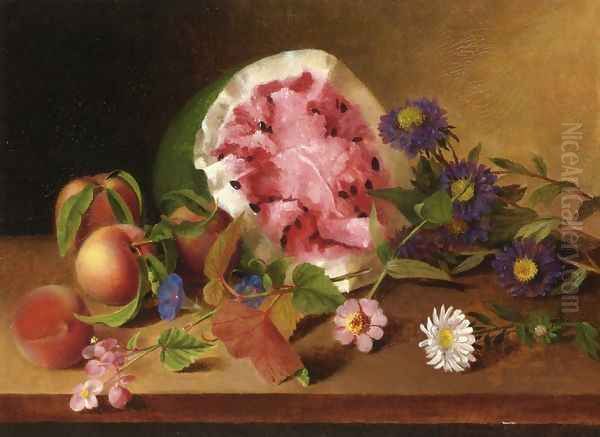
James Peale was an integral part of what is often referred to as the "Peale Dynasty," America's first family of artists. The patriarch, Charles Willson Peale, was not only a prolific painter but also a naturalist, inventor, and museum founder. He actively encouraged artistic pursuits within his family, naming his children after famous artists of the past, such as Raphaelle, Rembrandt, Rubens, and Titian Ramsay Peale, all of whom became accomplished artists in their own right.
James Peale's relationship with his brother Charles Willson was foundational. He learned his craft from Charles and often worked in close association with him, particularly in the early years. They managed a shared studio for a period, and their styles sometimes showed mutual influence. In 1786, the brothers reportedly made a professional agreement: Charles would focus on large-scale oil portraits, while James would specialize in miniatures, a division that allowed both to flourish in their respective niches. However, this division was not absolute, as James continued to paint larger portraits and Charles occasionally produced miniatures.
James Peale also passed on his artistic knowledge to his own children. He married Mary Claypoole (1753–1829), herself from an artistic family (her father was the painter James Claypoole Sr., and she was the niece of the painter Matthew Pratt). Together, they had seven children, five of whom were daughters. Remarkably, three of these daughters became professional artists:
Anna Claypoole Peale (1791–1878) became a successful miniaturist, like her father, and also painted still lifes. She was elected an academician of the Pennsylvania Academy of the Fine Arts.
Sarah Miriam Peale (1800–1885) became one of America's first professional female artists, known for her portraits and still lifes. She worked successfully in Philadelphia, Baltimore, and St. Louis, and was also elected an academician of the Pennsylvania Academy. Her portrait Mary De Vint and Her Children (1836) is a fine example of her skill.
Margaretta Angelica Peale (1795–1882) also painted, primarily still lifes, though she was perhaps less prolific professionally than her sisters Anna and Sarah.
The Peale family's collective output was immense, and their influence on the Philadelphia art scene was profound. They were instrumental in founding the Pennsylvania Academy of the Fine Arts in 1805, one of the oldest art institutions in the United States, where James Peale exhibited regularly.
Interactions with Contemporary Artists
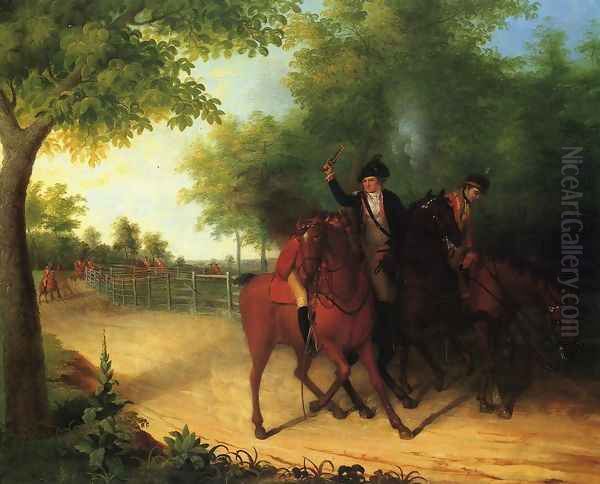
Living and working in Philadelphia, James Peale was part of a vibrant artistic community. He naturally interacted with many leading artists of his day. His brother, Charles Willson Peale, was a central figure, but James also had connections with other painters. For instance, he and the prominent portraitist Thomas Sully, who was younger but highly influential, are known to have painted portraits of each other, a common practice among artists signifying mutual respect and collegiality.
The artistic landscape of Philadelphia and the early United States also included figures like Gilbert Stuart, renowned for his iconic portraits of George Washington, and John Singleton Copley, though Copley had departed for England before James Peale's career fully blossomed. The Peales, including James, were aware of and responded to the prevailing Neoclassical and emerging Romantic styles, adapting them to an American context. The influence of Benjamin West, who, though based in London, served as a mentor to many American artists (including Charles Willson Peale), was also indirectly felt. Later in James Peale's career, artists like Washington Allston were pioneering Romanticism in American art, a trend reflected in Peale's later landscapes.
Personal Life, Character, and Anecdotes
James Peale's personal life was intertwined with his artistic endeavors and his large family. His marriage to Mary Claypoole connected him to another artistic lineage. His household was likely a busy one, filled with the activities of his artist children.
According to family accounts and historical records, James Peale was known for his amiable disposition. He maintained a diary for a significant portion of his life, from around 1760 until his death, which, like his brother Charles's extensive journals, would have recorded important personal events, social activities, and perhaps observations on the art world.
One harrowing anecdote from his life involves the devastating yellow fever epidemic that struck Philadelphia in 1793. To escape the plague, James Peale and his family fled the city to Carpenter's Point. Tragically, during this period of crisis, his youngest daughter succumbed to illness. James himself contracted the fever but fortunately survived the ordeal. This experience, shared by many Philadelphians, including figures like Dr. Benjamin Rush, undoubtedly left a deep mark.
While his brother Charles Willson Peale was famous for his museum, which featured natural history specimens, wax figures, and even "moving pictures" (a precursor to projected entertainment), James's primary focus remained on his painting. However, he was undoubtedly involved in the broader cultural life fostered by his family, including exhibitions and artistic discussions. The Peale family's artistic endeavors often had an element of public engagement and education, reflecting the Enlightenment ideals prevalent at the time.
Later Years and Artistic Evolution
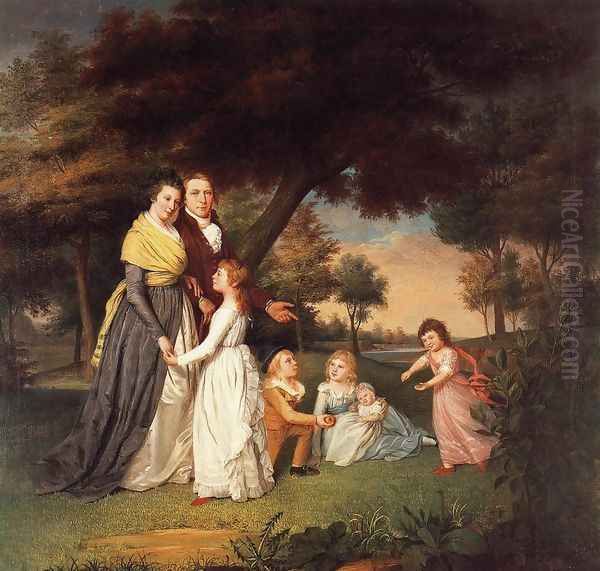
As James Peale aged, his artistic focus shifted. Around 1818, due to failing eyesight, he largely gave up painting miniatures, which required intense close work. He then turned more seriously to painting still lifes and, to a lesser extent, landscapes. This transition allowed him to continue his artistic practice productively. His still lifes from this later period are considered among his finest achievements in the genre.
In 1826, a more formal separation of artistic and business affairs occurred between James and his brother Charles Willson Peale. James increasingly concentrated on his still life compositions, which found a ready market and were frequently exhibited at the Pennsylvania Academy of the Fine Arts and other venues. His dedication to still life painting in these later years significantly contributed to its acceptance and popularity as a distinct genre in American art.
James Peale continued to paint almost until the end of his life. He passed away in Philadelphia on May 24, 1831, at the venerable age of 82. He was buried in the Gloria Dei (Old Swedes') Church burial ground in Philadelphia, a historic site.
Legacy and Art Historical Significance
James Peale's legacy in American art history is multifaceted and enduring. He was a highly skilled and prolific painter who excelled in multiple genres, leaving behind a substantial body of work that provides invaluable insights into early American life and artistic tastes.
His contributions to miniature portraiture were significant. In an era before photography, miniatures served a vital social and personal function, and Peale was among the leading practitioners of this delicate art form in America. His ability to capture likeness and character on a small scale was exceptional.
Perhaps his most lasting impact was in the realm of still life painting. Along with his nephew Raphaelle Peale, James Peale is credited with establishing still life as a serious and respected genre in American art. His lush, detailed depictions of fruits and flowers set a standard for American still life and influenced many subsequent artists. He demonstrated that American subjects and American artistic talent could rival European traditions.
As a member of the Peale family, he contributed to a unique artistic dynasty that played a pivotal role in the cultural development of the United States. The Peales were not just artists; they were educators, innovators, and institution builders. James Peale's role as a mentor to his own artist daughters, Anna Claypoole and Sarah Miriam, was particularly important in fostering opportunities for women in the arts at a time when such opportunities were scarce.
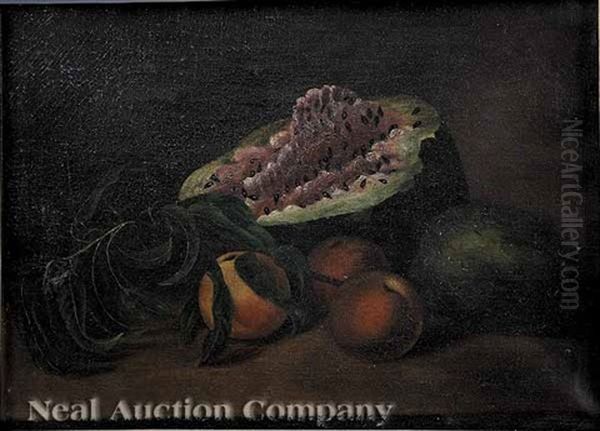
His works are now held in major American museums, including the Metropolitan Museum of Art in New York, the National Gallery of Art in Washington, D.C., the Philadelphia Museum of Art, and the Winterthur Museum, Garden and Library. These collections attest to his enduring importance and the high regard in which his art is held.
Conclusion
James Peale was more than just the younger brother of a famous artist; he was a formidable artistic talent in his own right. His dedication to his craft, his mastery of miniature and still life painting, and his role within America's first family of artists secure his place as a key figure in the foundation of American art. From the battlefields of the Revolution to the bustling studios of Philadelphia, his life mirrored the energy and aspirations of a young nation. His paintings continue to charm and inform, offering a vibrant connection to America's artistic heritage and the individuals who shaped it. His influence, both direct and through his family, helped to cultivate a distinctly American artistic tradition that would continue to evolve and flourish long after his lifetime.